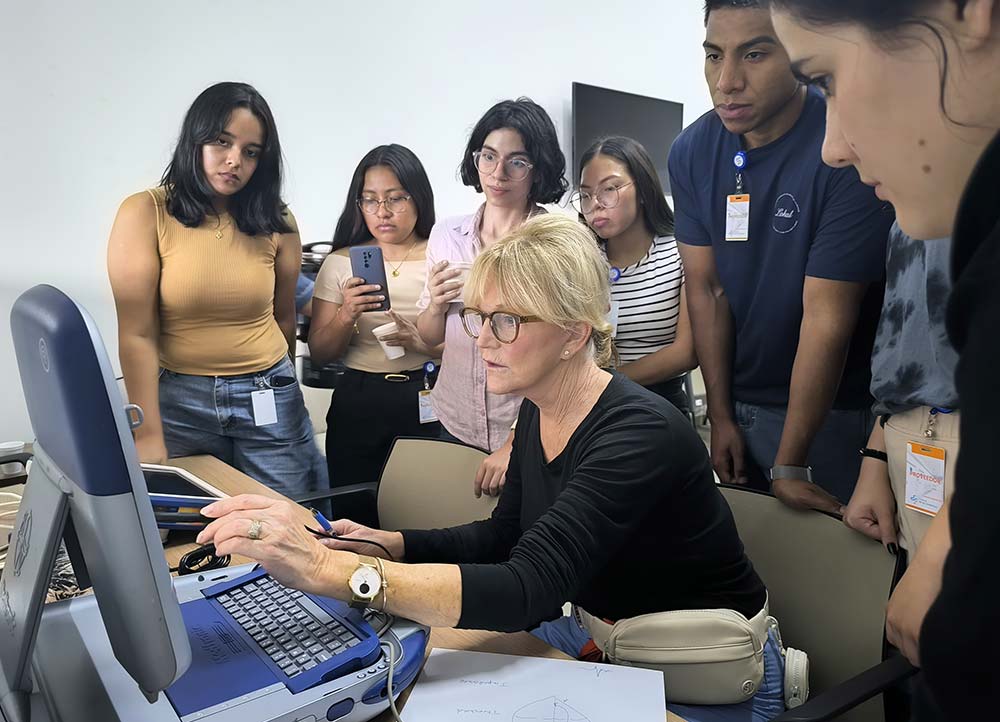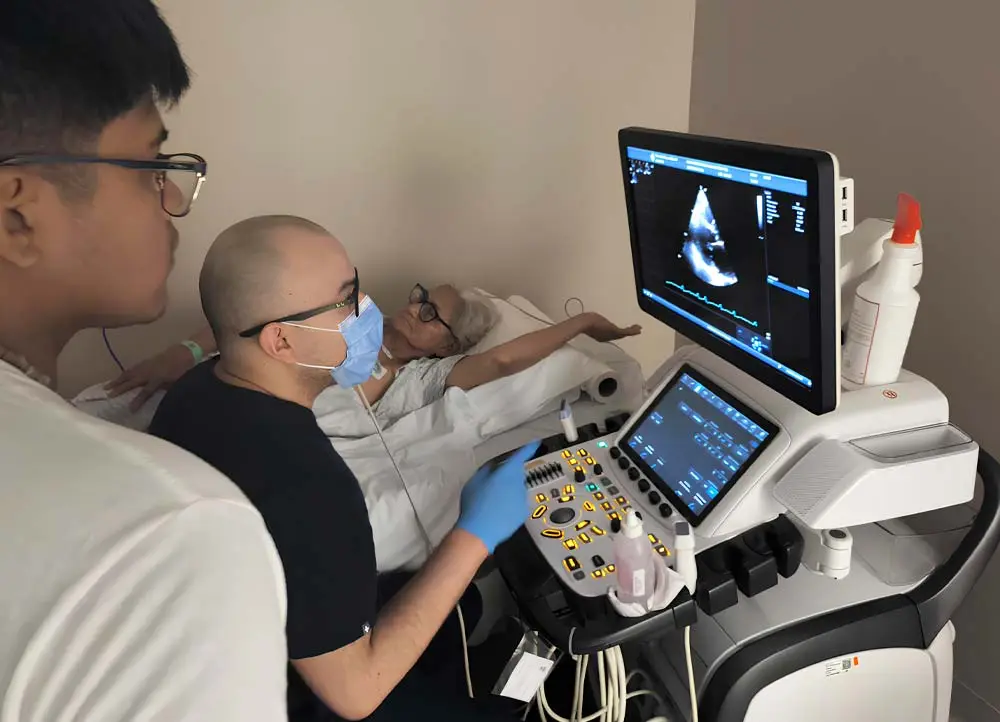“Hearts Without Borders”: A Meaningful Experience for Medical Students

25 June, 2025
The project “Hearts Without Borders”, carried out in March thanks to a partnership between the Nacional Vida Segura Foundation, the Gabriel René Moreno Autonomous University (UAGRM), Clínica de las Américas, and Project Pacer International, involved 23 final-year medical students from the state university of Santa Cruz.
UAGRM’s participation was made possible through its Faculty of Human Health Sciences, which not only responded to the Foundation’s invitation to collaborate on the initiative, but also selected top-performing students to join the team. “The main requirement for their selection was an advanced level of English, in addition to a strong academic record,” explained Arminda Morón Sánchez, Dean of the Faculty.
The students, aged 22 to 24, were actively involved in all phases of the project: from patient admission to clinical assessments and observation of the surgeries. Beyond learning alongside Bolivian and international physicians, the students also played a key role as interpreters, facilitating communication between patients and healthcare professionals of various nationalities.

The Faculty highly values the enriching nature of this type of experience. “It is essential for our students to graduate with real-life experiences that enhance their professional competencies. This interinstitutional alliance provided that opportunity,” emphasized Dean Morón. “It was a coordinated effort: we assessed the project’s viability, feasibility, and—above all—the needs of the population,” she added.
The project took nearly three months of preparation. The Nacional Vida Segura Foundation coordinated directly with Project Pacer International and managed the customs clearance process for the temporary import of equipment and medical devices, including the pacemakers that would be implanted in selected patients.
According to Morón, health initiatives like this should be repeated more frequently in Santa Cruz de la Sierra. “A significant portion of the population requires a pacemaker, but the high cost—over USD 5,000 including surgery—prevents many from accessing one,” she stated.
In this first edition of “Hearts Without Borders”, a total of 30 pacemakers were implanted—a meaningful number, though below the initial goal. “Our target was 100, but the costs limited our reach. Nonetheless, we are proud of what we accomplished and hope this project can be carried out at least twice a year,” she concluded.



